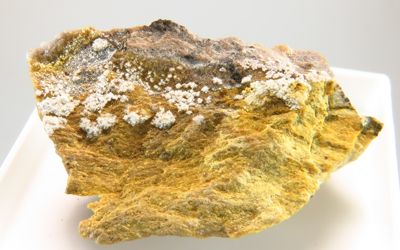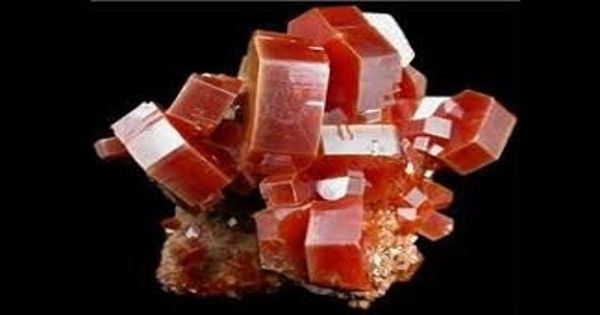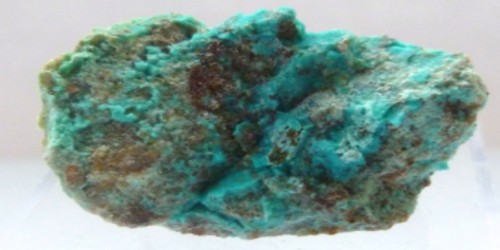Jurbanite is a sulfate mineral with the chemical formula AlSO4(OH)·5H2O. It is a monoclinic mineral. Jurbanite was first described for an occurrence in the San Manuel mine of Pinal County, Arizona and first described in 1976s. It was named for Joseph John Urban, the mineral collector who discovered it.
General Information
- Category: Sulfate minerals
- Formula: AlSO4(OH)·5H2O
- Crystal system: Monoclinic
- Crystal class: Prismatic (2/m) (same H-M symbol)

Fig: Jurbanite
Properties
Its molecular weight is 230.13 g/mol. It crystallizes in the monoclinic system and is dimorphous with the orthorhombic mineral rostite. It occurs as a secondary (post-mine) mineral in mines containing sulfide minerals.
- Color: Colorless
- Crystal habit: Small crystals and stalactitic forms
- Tenacity: Brittle
- Mohs scale hardness: 2.5
- Luster: Vitreous
- Diaphaneity: Transparent
- Specific gravity: 1.786
- Optical properties: Biaxial (-)
Occurrence:
As rare secondary crusts in humid tunnels in oxidized portions of sulfide deposits in aluminous rocks; apparently deposited directly from mine water at about 270C and 100% humidity (San Manuel mine, Arizona, USA).
Association: Epsomite, hexahydrite, pickeringite, starkeyite (San Manuel mine, Arizona, USA); rostite, gypsum, pickeringite, metavoltine, ferrinatrite, sideronatrite, tamarugite, uklonskovite (Cetine mine, Italy).
Information Source;
















